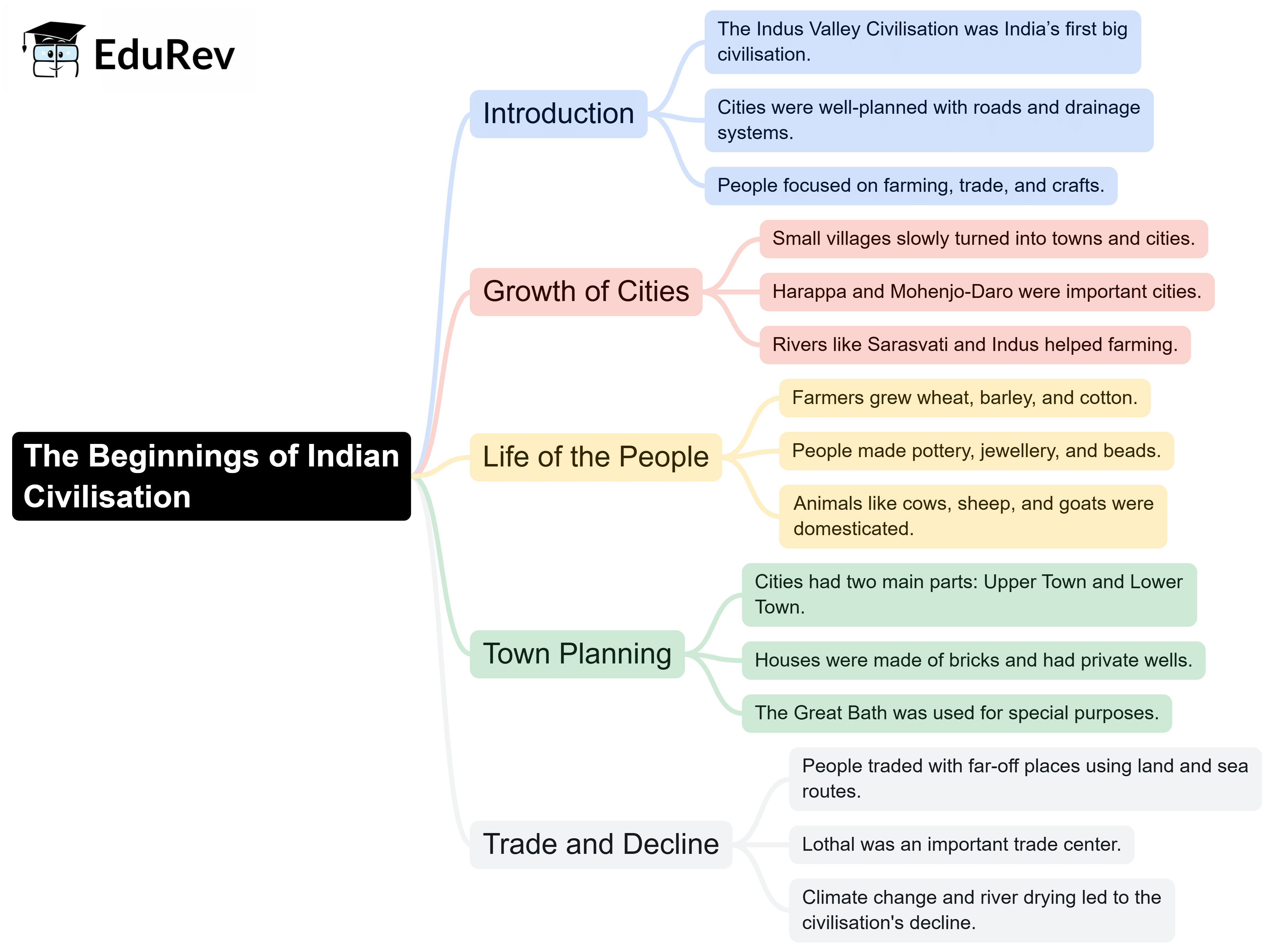Class 6 Exam > Class 6 Notes > Subject-Wise Mind Maps for Class 6 > Mind Map: The Beginnings of Indian Civilisation
Mind Map: The Beginnings of Indian Civilisation | Subject-Wise Mind Maps for Class 6 PDF Download

The document Mind Map: The Beginnings of Indian Civilisation | Subject-Wise Mind Maps for Class 6 is a part of the Class 6 Course Subject-Wise Mind Maps for Class 6.
All you need of Class 6 at this link: Class 6
FAQs on Mind Map: The Beginnings of Indian Civilisation - Subject-Wise Mind Maps for Class 6
| 1. What are the key features of the Indus Valley Civilization? |  |
Ans. The Indus Valley Civilization, one of the earliest urban cultures in the world, is characterized by advanced city planning, sophisticated drainage systems, standardized weights and measures, and impressive architecture including well-built houses made of baked bricks. Major cities like Harappa and Mohenjo-Daro featured grid patterns and public baths, indicating a high level of social organization and civic amenities.
| 2. How did agriculture contribute to the beginnings of Indian civilization? |  |
Ans. Agriculture played a crucial role in the beginnings of Indian civilization by providing a stable food supply, which allowed communities to settle in one place rather than being nomadic. The domestication of plants like wheat and barley, along with the rearing of animals, led to population growth, the establishment of villages, and eventually the rise of complex societies and trade networks.
| 3. What are the significant archaeological sites related to the beginnings of Indian civilization? |  |
Ans. Significant archaeological sites include Harappa and Mohenjo-Daro, which are key to understanding the Indus Valley Civilization. Other important sites are Lothal, known for its dockyard, and Kalibangan, which provides insights into early agricultural practices. These sites have yielded artifacts that reveal the daily life, trade practices, and technological advancements of early Indian societies.
| 4. What were the main trade practices during the Indus Valley Civilization? |  |
Ans. The Indus Valley Civilization engaged in extensive trade, both locally and with distant regions such as Mesopotamia. They traded goods like cotton textiles, pottery, beads, and metals. Evidence suggests that they used a system of weights and measures, and traded through river routes and possibly overland, which facilitated the exchange of goods and cultural ideas.
| 5. How did the geographical features of India influence the development of early civilizations? |  |
Ans. The geographical features of India, such as its fertile plains, the Indus and Ganges river systems, and the protective mountains, greatly influenced the development of early civilizations. The rivers provided water for irrigation, supporting agriculture, while the mountains offered natural barriers against invasions. These features helped create stable agricultural communities that eventually evolved into complex societies.
Related Searches
















